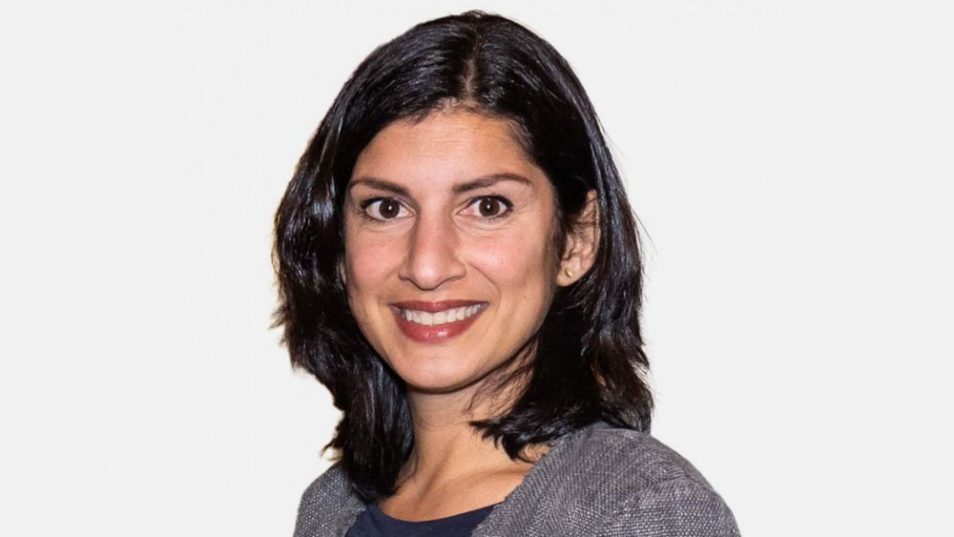“There’s still a lot we can learn from Silicon Valley”
 © DWIH San Francisco
© DWIH San Francisco
The newly founded DWIH San Francisco launched its activities in the spring of 2022. Director Dr. Zahar Barth-Manzoori on a very successful first few months in the Bay Area and the Center’s main thematic priorities.
Dr. Barth-Manzoori, the opening ceremony for DWIH San Francisco was held at the Exploratorium in San Francisco on April 29, 2022. What are your memories of the event?
I remember the event itself very vividly of course, but I’m particularly reminded of the intense preparation work we did, too. It was our first major appearance in the Bay Area, so to speak. Given the wide range of topics, institutions and people, we had to think carefully about what to focus on – and how to hold our own as a new institution alongside all the other excellent players in the region. It was enormously helpful to be able to build on existing contacts.
You mean with the University of Berkeley, for example?
Yes, exactly. We already had a longstanding cooperation with the Center for German and European Studies, which is co-sponsored by the DAAD. We used this for the opening ceremony: UC Berkeley was the first stop on a three-day tour of the region which we’d organized for our guests. There we got to talk to the head of the Gateway project that is looking to drive forward the establishment of a Data Science Center for data-driven research, for example. At Stanford University we organized a panel that included members of the Hoover Institution – a public policy think tank – and the Doerr School of Sustainability. The idea was to gain a more general sense of what makes a university tick.
Did it work?
We were very happy with the outcome. I think our selection pretty much struck a chord with the Bay Area, especially in terms of our perspective on research and innovation. In this region you simply have this close connection between science and business. You could see this on our visit to Autodesk in San Francisco, too – a non-university research network that also does contract work for industry. One thing was especially important to us: through our delegation trip we established contacts with local institutions, which we then drew on for events and further projects – and continue to do so.
How did the first few months go after the official start of DWIH activities?
The question we asked ourselves was this: how can we usefully apply our network to the systems here as well? Our first event, just a few weeks after opening, was held in collaboration with the think tank Bay Area Council Economic Institute. The question was how the region has developed since the pandemic in terms of the presence of international agencies. There was a report that involved a survey of more or less the entire international innovation community, so the various representatives were all there at the event, of course. And suddenly everyone knew who we were.
That sounds like a perfect start.
I particularly remember a dinner with the Japanese Consul General quite soon after: he wanted to find out how the Germans had managed to build up such a strong and visible presence in such a short period of time. That made us feel very proud, of course. It shows us that we’ve managed to make an impression on the community very quickly. And that’s a perfect starting point for our program work, of course.
What exactly does this program work consist of?
One of the DWIH’s most important goals is to gain access to expert communities. We managed to achieve this with an event on the topic of sustainability and mobility held jointly together with the German-American Chamber of Commerce, for example, and by our presence at a specialist congress held by the Society for Neuroscience in November 2022. This was a wonderful opportunity to specifically address researchers based in the Bay Area and draw people’s attention to opportunities for collaboration with German colleagues. Our second pillar is the topic area of innovation with a focus on entrepreneurship. Here we organized a Falling Walls Lab at the University of Berkeley which took place in September. It went really well: we were able to send two participants to the big final event in Berlin.
Since the collapse of Silicon Valley Bank, there have been repeated reports that the Bay Area’s golden age is now a thing of the past. How do you see this?
I’m familiar with the reports – the New York Times has published several articles on it in particular. Frankly, I don’t think much of it. In fact I’m seeing quite the opposite. Take the example of artificial intelligence. Where are the most innovative tools being developed right now? Still here in the Bay Area. There’s still a lot Germany can learn from Silicon Valley. One of our main tasks in the years to come will be to provide German institutions with access to what is probably still the most innovative region in the world.
Interview: Klaus Lüber
